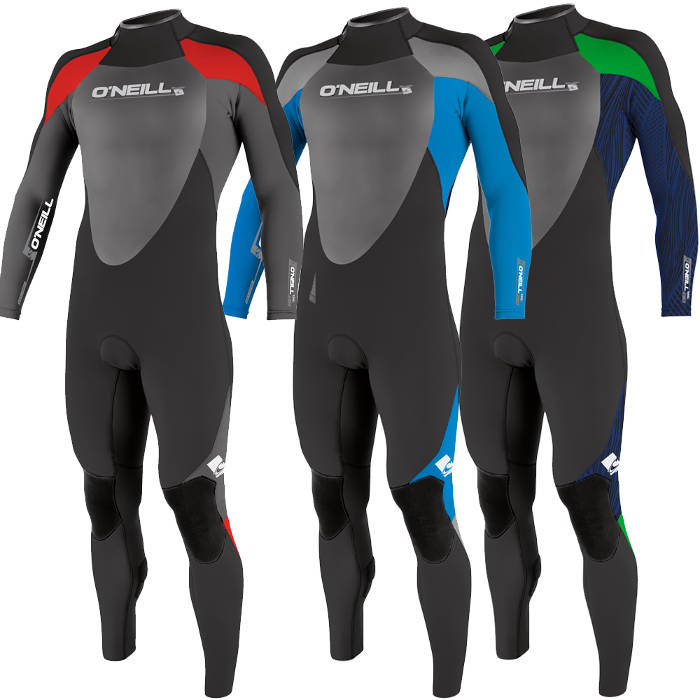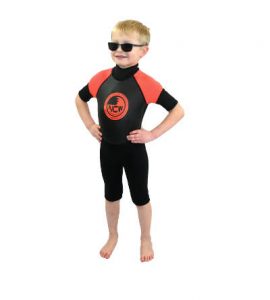Wetsuits
Snorkelling is all about getting back to nature, and using as little equipment as possible. So you won't need a wetsuit, right?
Well... there are circumstances when a wetsuit comes in handy. In cold water, for example. Or when there are jellyfish around. Or you need protection from sharp rocks. They are useful pieces of kit, and there are lots of different versions of a wetsuit. So it helps if you know your way around them.
How a wetsuit works
Wetsuits are close-fitting skins of neoprene designed to fit around your body. When it's hanging on a coat hanger, a wetsuit looks like a huge skin transplant, with a torso, two arms and two legs. And that's essentially what it is: a second skin that fits over your own. The suit matches all your contours and crannies.
When you’re in the sea, it allows a small amount of water into the suit through the wrist, ankle and neck apertures. This forms a thin sheen of water all over your body, which picks up the temperature of your body heat, and keeps your body warm while you cruise the cold water. If your face, hands and feet are exposed, they get cold before your torso does: so people often wear gloves, boots and a hood to maintain the extra warmth. A wetsuit won't keep you in the sea for ever, but it will usefully extend the amount of time you can spend snorkelling in cold water.



Different types and thicknesses
A wetsuit should fit you like a glove - if it's too tight, you won't get it on or it might restrict your breathing, and if it's too loose, it won't work properly. So you need to try before you buy. And, of course, there are different sorts - shorties, long johns, Farmer Johns, you name it, they have it, and the names can vary between countries. Oh, and there are surfers’ wetsuits. They’re for surfers.
Don't worry about all the different names, stick to the basics. If the water’s cold and you want to stay in for a while, get a wetsuit which has a thick skin, full arms and full legs. If you're in tropical waters but the temperature is a bit low, you could do well with a ‘shortie’ - a torso with cut-off arms and legs, usually made of a thinner neoprene.
How thick should the neoprene be? Here’s where you need to talk to your local dive shop. They know the waters in the area, and can give you good advice. And they have charts showing which thickness is appropriate for which season. The wetsuits are usually between 2mm and 7 mm thick. The 7 mm is for cold water. Steve learned to scuba dive in February in the English Channel at 10 degrees centigrade. He was very grateful for his 5 mm wetsuit, boots, gloves and hooded top. If he could have fitted a kettle in there too, he would have done.
If a wetsuit fits properly and is designed for local conditions, you’ll get used to it very quickly. If it doesn't fit well, it will bag up with air and make you float on top of the water (some people wear belt weights to counteract a wetsuit’s buoyancy), or allow too much water in, or restrict your breathing - so do make sure you get it fitted properly.
One tip - if you're starting out and you're not sure if you can afford a wetsuit (£100 to £200, typically) go to a dive shop that sells second-hand wetsuits. Like exercise bikes and dumbbells, wetsuits are things that people often buy but never use, and their resale price is low. If you can, find a shop that will give you advice on how well the suit fits. Don't be surprised when you find it difficult to put on: it's a tricky operation at first. You’ll find you have more legs than you thought.
Finally, scuba divers use something called a dry suit (which seals at the wrists and ankles keep you dry) and new technology is developing all the time: heated suits, wet-dry suits, titanium lining. Meh. You’re a snorkeller. Keep it simple.
Here are a few websites that describe the different suits. Even when they're trying to make it simple, however, it still feels complicated. Don't be worried if your eyes start to glaze over.
https://www.scubadivebahamas.com/the-different-types-of-wetsuits/


Usual warning: we have made every effort to make sure this information is correct and up-to-date, but you need to check it all yourself.
© Garreg Lwyd Ltd 2018
